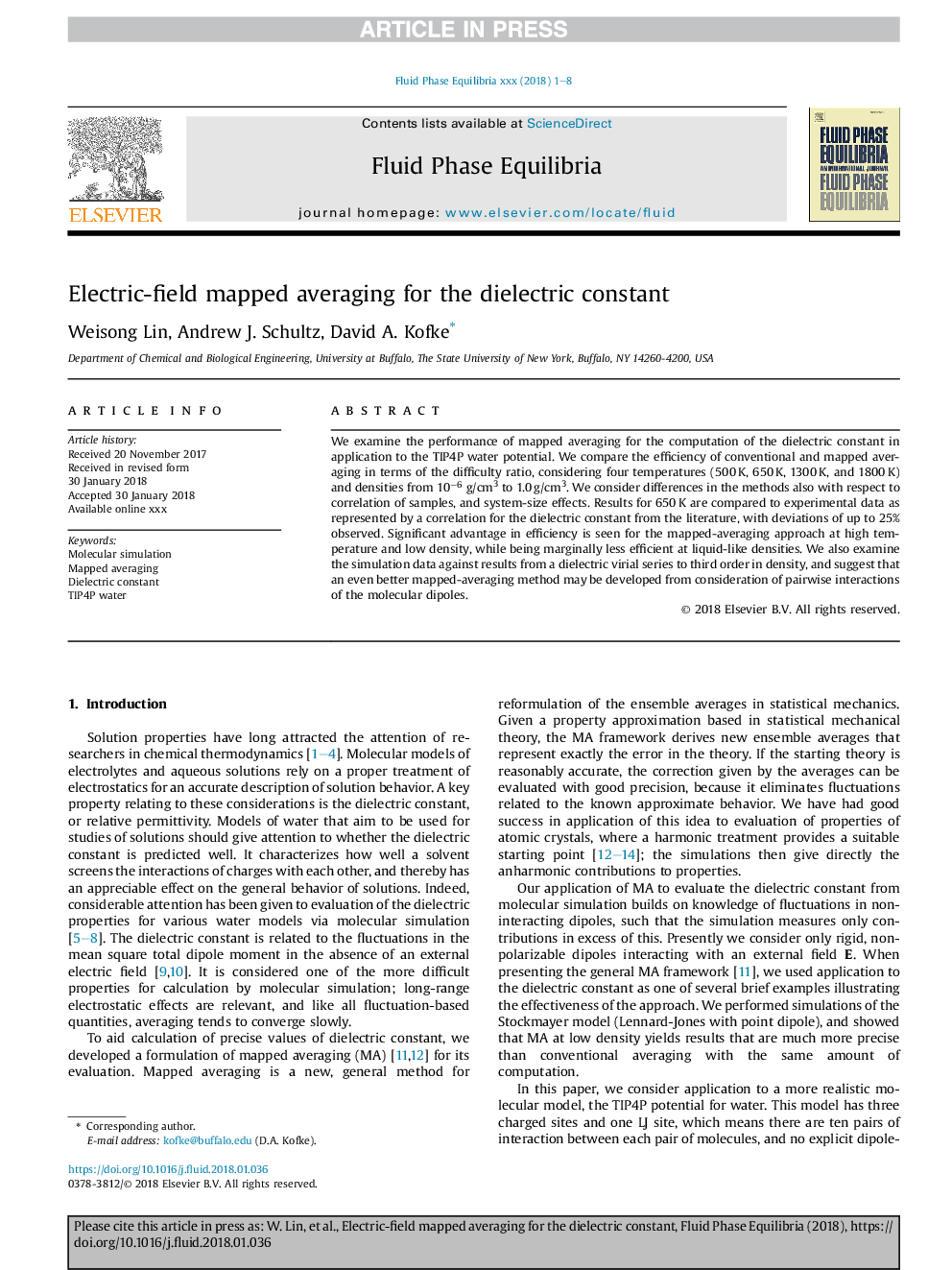| Article ID | Journal | Published Year | Pages | File Type |
|---|---|---|---|---|
| 6619133 | Fluid Phase Equilibria | 2018 | 8 Pages |
Abstract
We examine the performance of mapped averaging for the computation of the dielectric constant in application to the TIP4P water potential. We compare the efficiency of conventional and mapped averaging in terms of the difficulty ratio, considering four temperatures (500â¯K, 650â¯K, 1300â¯K, and 1800â¯K) and densities from 10â6 g/cm3 to 1.0â¯g/cm3. We consider differences in the methods also with respect to correlation of samples, and system-size effects. Results for 650â¯K are compared to experimental data as represented by a correlation for the dielectric constant from the literature, with deviations of up to 25% observed. Significant advantage in efficiency is seen for the mapped-averaging approach at high temperature and low density, while being marginally less efficient at liquid-like densities. We also examine the simulation data against results from a dielectric virial series to third order in density, and suggest that an even better mapped-averaging method may be developed from consideration of pairwise interactions of the molecular dipoles.
Related Topics
Physical Sciences and Engineering
Chemical Engineering
Chemical Engineering (General)
Authors
Weisong Lin, Andrew J. Schultz, David A. Kofke,
